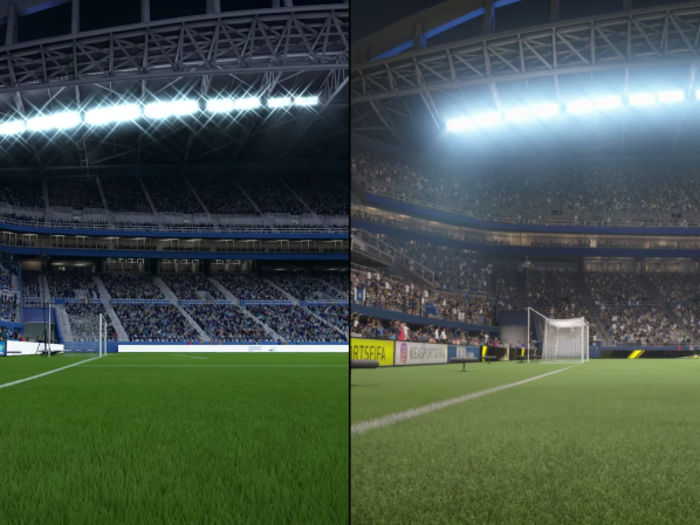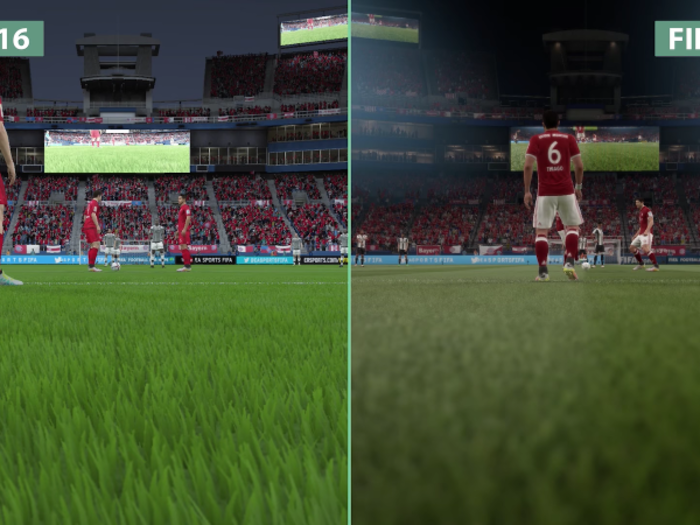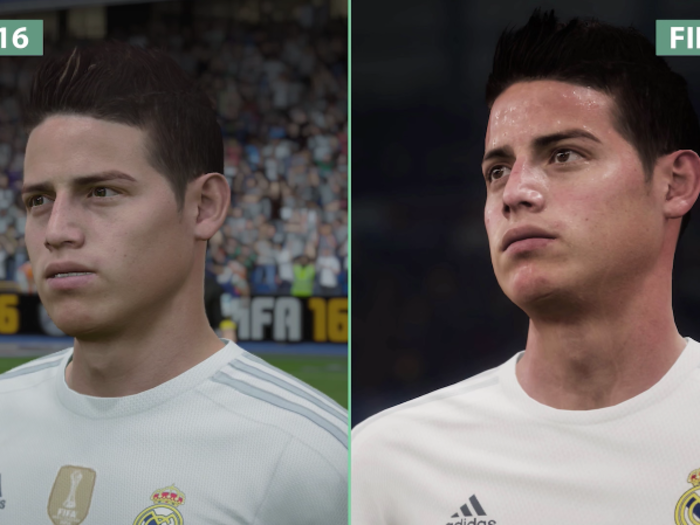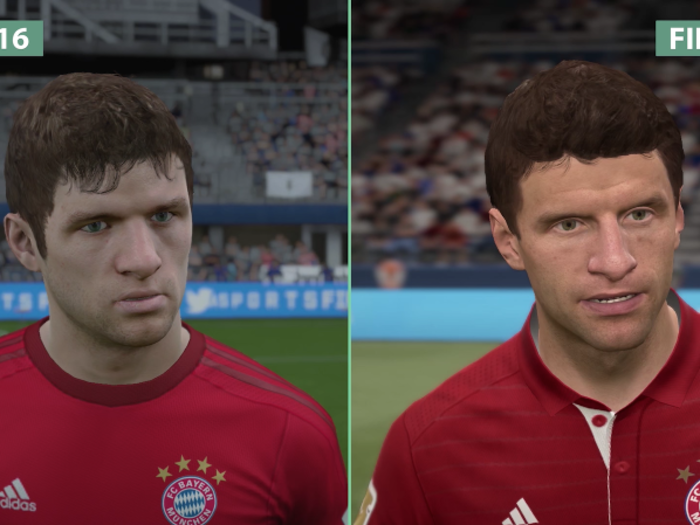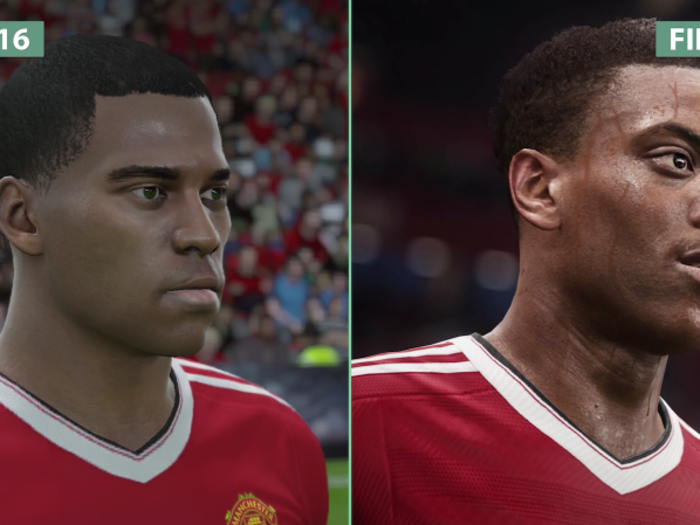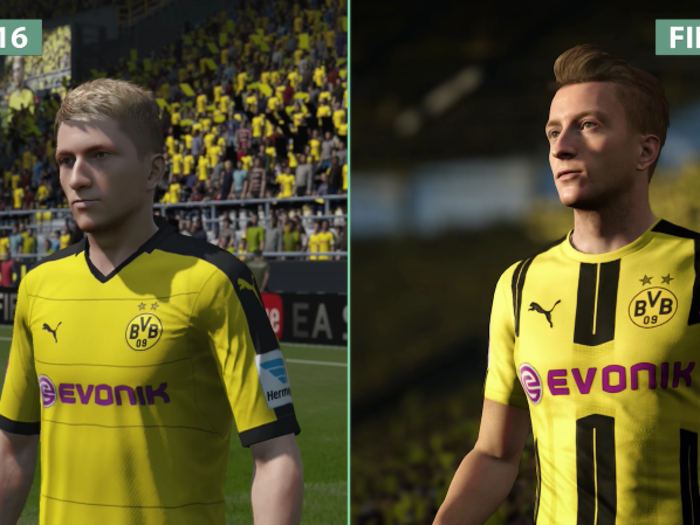The lightning in general is more photo-realistic and dynamic, and there's more focus blurring, too, which makes it look more cinematic than a video game cut-scene.
Notice how much darker the dark spots in "FIFA 17" are compared to "FIFA 16," which gives the new game more depth. The "FIFA 17" screenshot shows more shading in the stands and the pitch itself, which makes for more dramatic ambience. There is some shading in "FIFA 16," but it's hardly noticeable – it looks like the whole scene is lit up.
The overall look of players during cut-scenes is dramatically improved due to the Frostbite graphics engine, which EA is using in "FIFA" for the first time this year.
Cut-scenes actually look cinematic now, rather than close-ups of "FIFA's" regular gameplay.
Colors during gameplay are also less saturated, giving "FIFA 17" a more mature look compared to the over-saturated "video game" look.
Source: DigitalFoundry/YouTube
And the lighting makes "FIFA 17" look more like a game what watch on TV than a video game.
Source: DigitalFoundry/YouTube
Player movements during cut-scenes, like goal celebrations, are also smoother and more realistic in "FIFA 17," whereas they're a little stiff in "FIFA 16."
Source: HollowGamer/YouTube
And you now have your club's actual manager on the sidelines compared to the random characters in suits, which has a surprisingly positive effect when it comes to realism.
Source: DigitalFoundry/YouTube
And they respond to your performance, too. Jose Mourinho clearly isn't happen with what's going on.
Player movements were pretty good in "FIFA 16," and they're marginally improved in "FIFA 17." However, players have more proportionate body parts in "FIFA17."
Source: DigitalFoundry/YouTube
Muller's arms in "FIFA 17," for example, are slimmer and somewhat shorter, which looks much more proportionate than in "FIFA 16." His skin tone is also more human compared to his morbidly pale skin in "FIFA 16."

